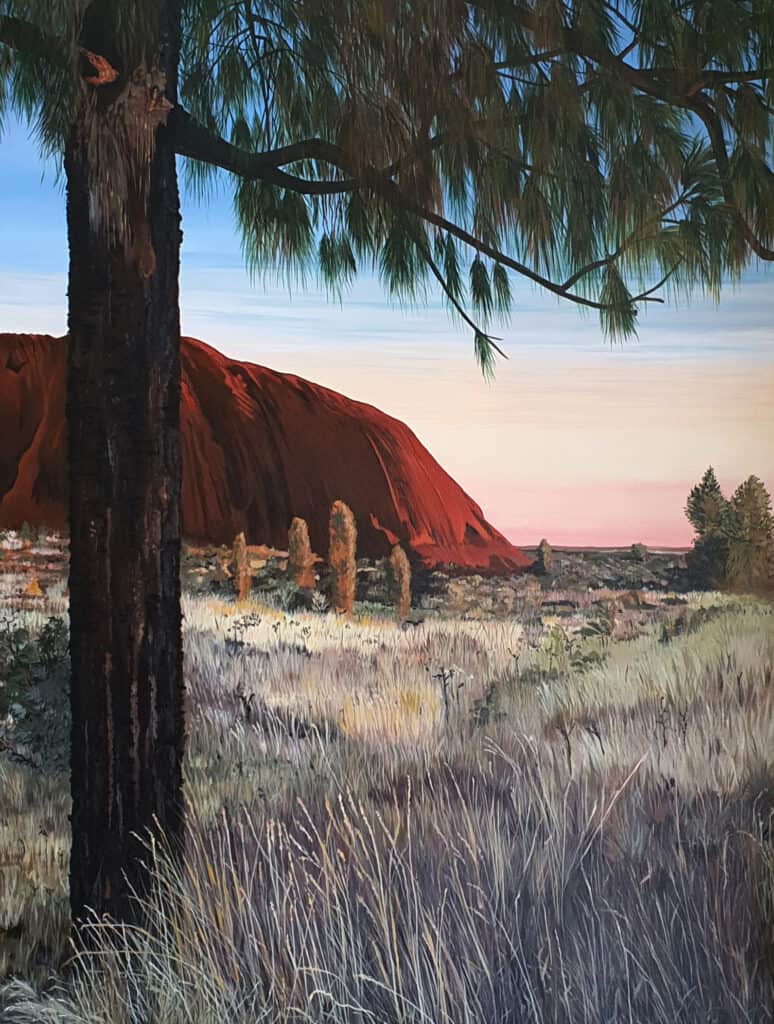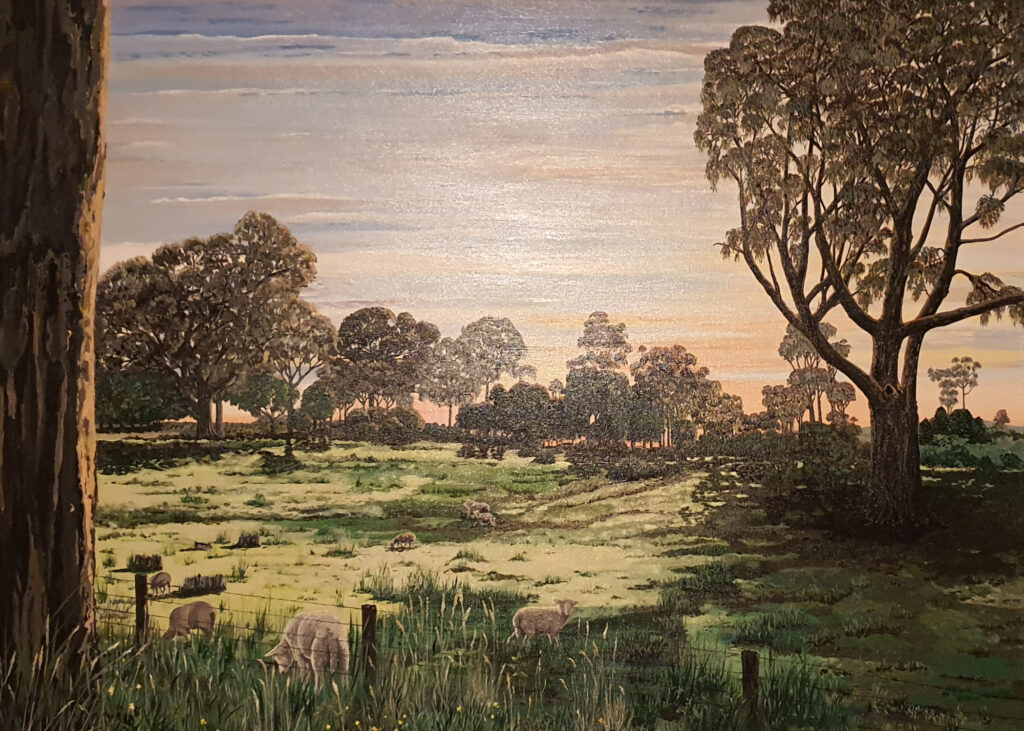Painting with acrylics to achieve a beautiful dawn sky is possible if you choose the right colors. Patterns of sunlight emerging from the horizon, with reflections of wispy clouds and pale sunrays make for a beautiful painting. But how is it done?

Color matching
The first step in achieving a perfect color match is to place an array of all your blues, pinks and golds in front of you. After your particular sky has revealed it’s best color palette, make a short-list of the best. Unlike Wellington Sunrise which was from a cold mid-Winter dawn, my current painting has all the classic Summer hues.
These are the colors I have chosen:
- Ultramarine Blue
- Australian Sky Blue
- Paynes Grey
- Magenta Light
- Cadmium yellow
- Orange
- Permanent Light Violet
- And of course Titanium White for mixing
Using your photo as a guide, mix a tiny amount of Ultramarine blue with Titanium white. Have a pad of Watercolor paper ready. Paint a small rough square, and label underneath.
When it has dried, match the color with your photo. This is your starting point and the process to use with all the hues found in your dawn sky.
Next add a small amount off Magenta Light to your mix of Ultramarine blue. This will give you a soft mauve tint to your sky blue.
Gradually increase the intensity of this color combination, painting small squares and labelling as you go.
This gives you the dry color and documentation guide as to how you achieved it. Keep mixing and color matching back to your photo.
Another blue which works well is Australian Sky Blue. It is slightly brighter in its effect to Ultramarine. It has already been mixed to a lighter shade of sky blue, so you can intensify it with Ultramarine or lighten it further with Titanium white.

Painting your Horizon
If you have a beautiful golden pink light on your horizon, add Orange plus Cadmium yellow to Titanium white and make this your base color.
Again paint your square, let it dry and label it. Place a good amount into a jar and label the jar. This is what you use on your palette as the foundation of your dawn light, gradually adding either white or Magenta Light until you have color-matched your photo.
When the light in your sky is streaked with shades of pinky mauve, try mixing Australian Sky Blue with Permanent Light Violet. Hints of this could also be used in your clouds. See how to paint clouds here.
Dark clouds across a pale dawn sky can be painted using a mixture of Australian Blue Sky with Paynes Grey, lightened to the right intensity with Titanium white. Even if your clouds are ominously dark, you don’t need to use anything as strong as black.

What color should you use for the clouds?
Clouds are painted after your sky has been painted unless you want to spend a long time mixing the wisps of cloud into your main sky while still wet. This is possible but is more difficult and takes times to get the consistency of the background color across a large canvas.
Clouds are painted using exactly the same colors as the sky, just using a different depth of color. This provides consistency in your over-all effect and makes sense in terms of natural light.
Pick up reflections of sunlight on the underside of the clouds and add touches of pink and gold if those colors are shown in your particular sky. Allow the light to catch on the edges and shine through the clouds in wispy strands across the blue.
When your painting is finished and you add your gloss varnish, it will all come to life like a vibrant sunrise does.
How do I show the sunrise through the trees?
Always paint your sky completely before any subject matter is added. It is the foundation of your landscape or sea/riverscape.
If you are painting a large canvas on an easel and you work from the top down you also eliminate any drips coming down onto your scene. This is particularly true if your paint is more watery for wispy transparent clouds.
If your sky is finished and has an even consistency across the canvas, you can paint your trees or other subject matter over the top of your sky.
This allows for a natural expanse of dawn light, right across your sky. Then as you paint your plant-life, you can see where the suns rays are hitting and use the colors in the sky to enhance the light and shade.
Look at Morning Walk to see how the golden sunlight is reflected off the trunk of the gum tree on the left.

As you can see there is a vast difference in how you present your sky in each painting. A dawn sky is usually much paler blue even on a red morning Sailor’s warning kind of sky.
‘Morning Walk’ can be seen in it’s home at St. Andrew’s Hospital in the Emergency Department waiting room. 350 South Terrace, Adelaide, South Australia.
Have fun experimenting and remember there is nothing you can do wrong, just paint over it if you don’t like it!

